Period murder mystery based on Agatha Christie’s novel. Set in 1939 while Europe teeters on the brink of war, And Then There Were None follows ten strangers with dubious pasts who are lured to Soldier Island, an isolated rock near the Devon coast in southern England. A television serial by Craig Viveiros, starring Douglas Booth, Charles Dance, Maeve Dermody, Burn Gorman, Anna Maxwell Martin, Sam Neill, Miranda Richardson, Toby Stephens, Noah Taylor, and Aidan Turner.
AND THEN THERE WERE NONE
Craig Viveiros
(2015)
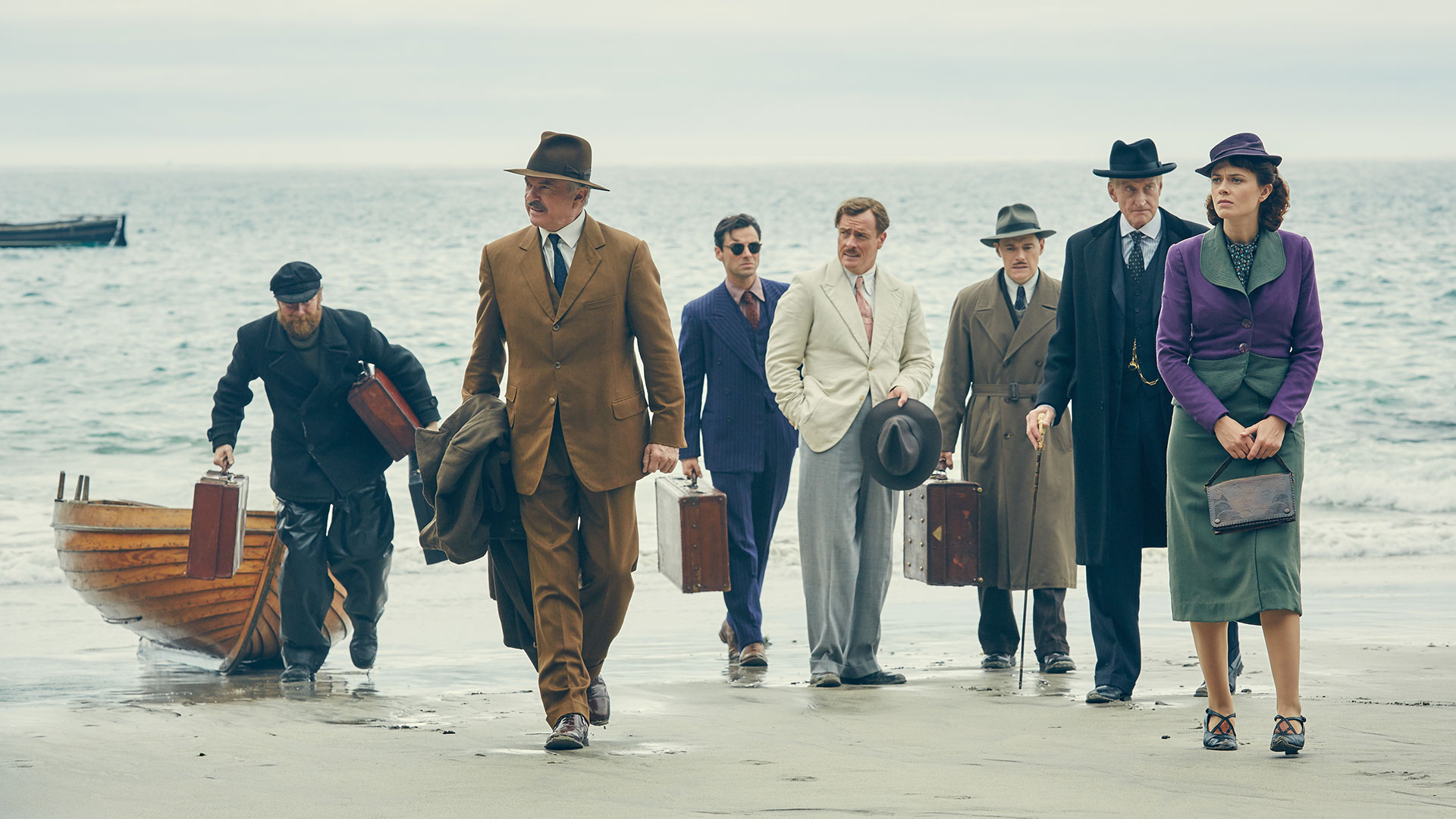
Amidst the scorching heat of late August 1939, a group of eight strangers, their paths never crossed, found themselves summoned to the secluded Soldier’s Island, nestled off the coast of Devon, England. Each individual arrived bearing an invitation, either from a seemingly familiar friend or an enigmatic couple known as Mr. and Mrs. Owen. The island, accessible only by boat, served as the stage for this gathering. Upon their arrival, the guests discover that the elusive couple, owners of the island’s solitary manor house, are yet to arrive. Instead, they are greeted by Thomas Rogers (Noah Taylor), the newly hired butler, and his wife Ethel (Anna Maxwell Martin), who has been tasked with culinary duties.

As the guests settle into the manor’s opulent accommodations, their attention is drawn to a curious poster adorning the wall – a nursery rhyme titled “TEN LITTLE SOLDIER BOYS,” its cheerful tune seemingly at odds with the foreboding atmosphere. Further unsettling the guests, the dinner table bears an unusual centerpiece: a collection of ten modernist figurines, crafted from jade and arranged in a circular formation.
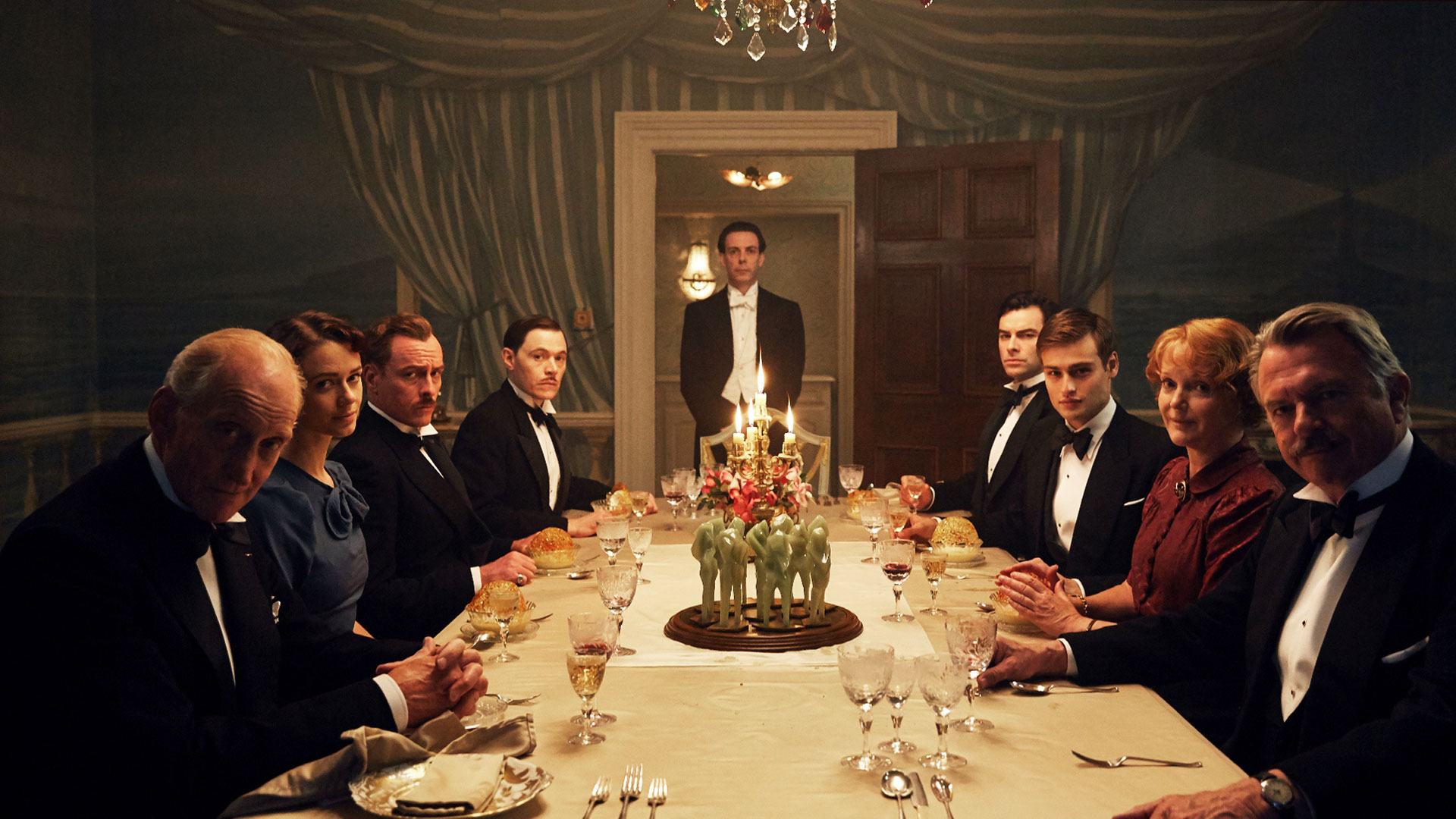
As the guests conclude their dinner, the enigmatic voice of an unseen host crackles through the room, emanating from speakers. The voice, devoid of emotion yet laced with an undercurrent of menace, begins to address each guest by name: Edward George Armstrong (Toby Stephens), Emily Caroline Brent (Miranda Richardson), William Henry Blore (Burn Gorman), Vera Elizabeth Claythorne (Maeve Dermody), Philip Lombard (Aidan Turner), John Gordon Macarthur (Sam Neill), Anthony James Marston (Douglas Booth), Lawrence John Wargrave (Charles Dance). Included in this roll call are Thomas Rogers himself and his wife, Ethel. The voice, with chilling precision, proceeds to level a damning accusation against each individual, alleging their complicity in the deaths of others.
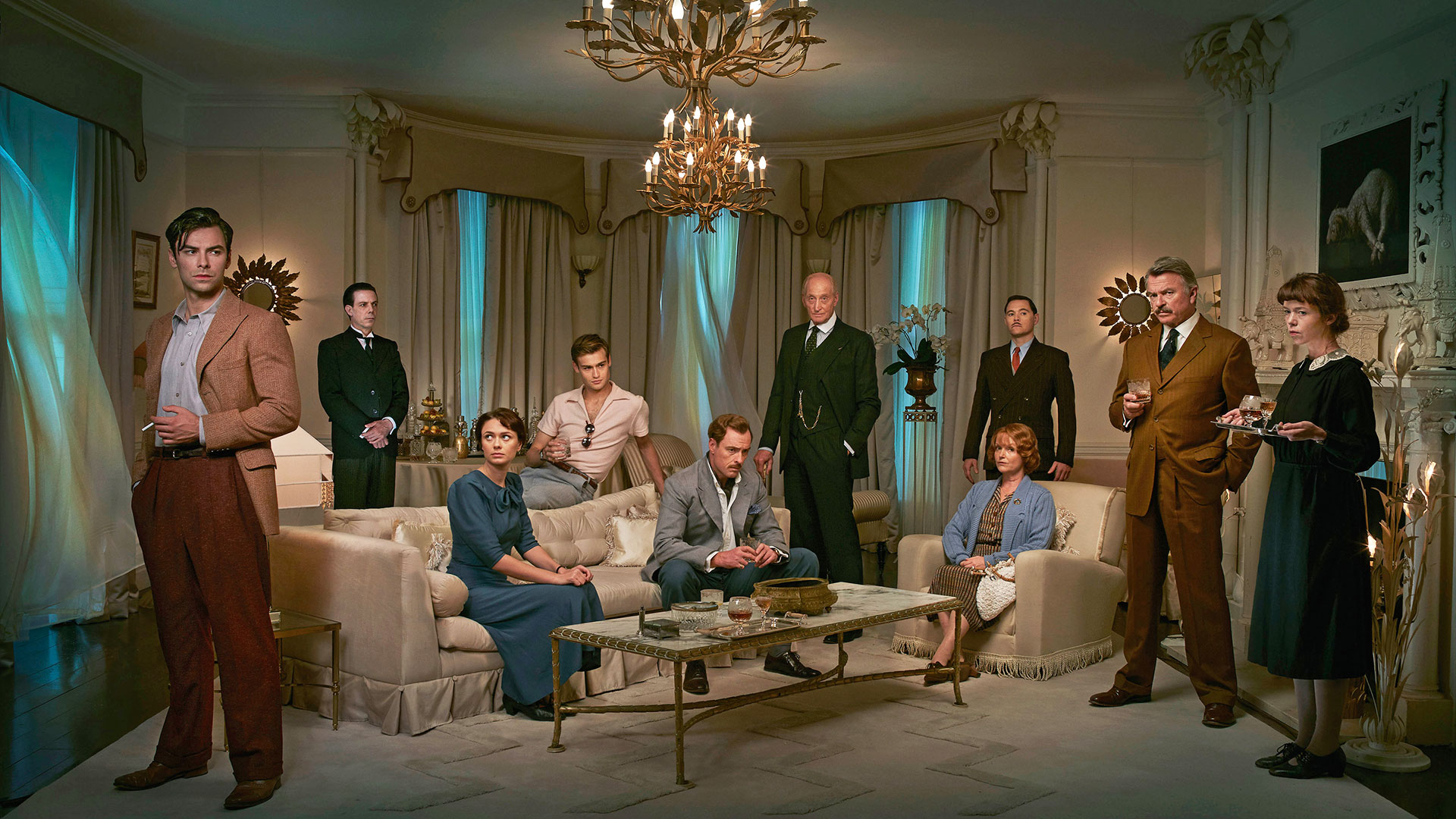
Baffled and increasingly unnerved, the guests embark on a frantic search for the source of the enigmatic voice. Their pursuit leads them down a trail of speaker cords, ultimately culminating in a room. Inside, they discover not a live person but a gramophone playing a vinyl record. Thomas Rogers, the recently hired butler, confesses that he was instructed by his employers, whom he has never met in person, to play the record at a specific time.

The guests gather in the living room, where each attempts to deflect the accusations, offering excuses and justifications for their alleged roles in the deaths of others. Only two, Philip Lombard and Anthony James Marston, have the courage to admit the truth of their accusations. Shortly after the confessions, Anthony suddenly collapses, his face contorted in agony. He has succumbed to cyanide poisoning, a death eerily reminiscent of the first little soldier from the nursery rhyme. The next day, the guests awake to another tragedy. Ethel, the cook, is found lifeless in her sleep, her death mirroring the second verse of the rhyme.
TEN little Soldier Boys went out to dine;
One Choke his little self and then there were nine.
NINE little Soldier Boys sat up very late;
One overslept himself and then there were eight.
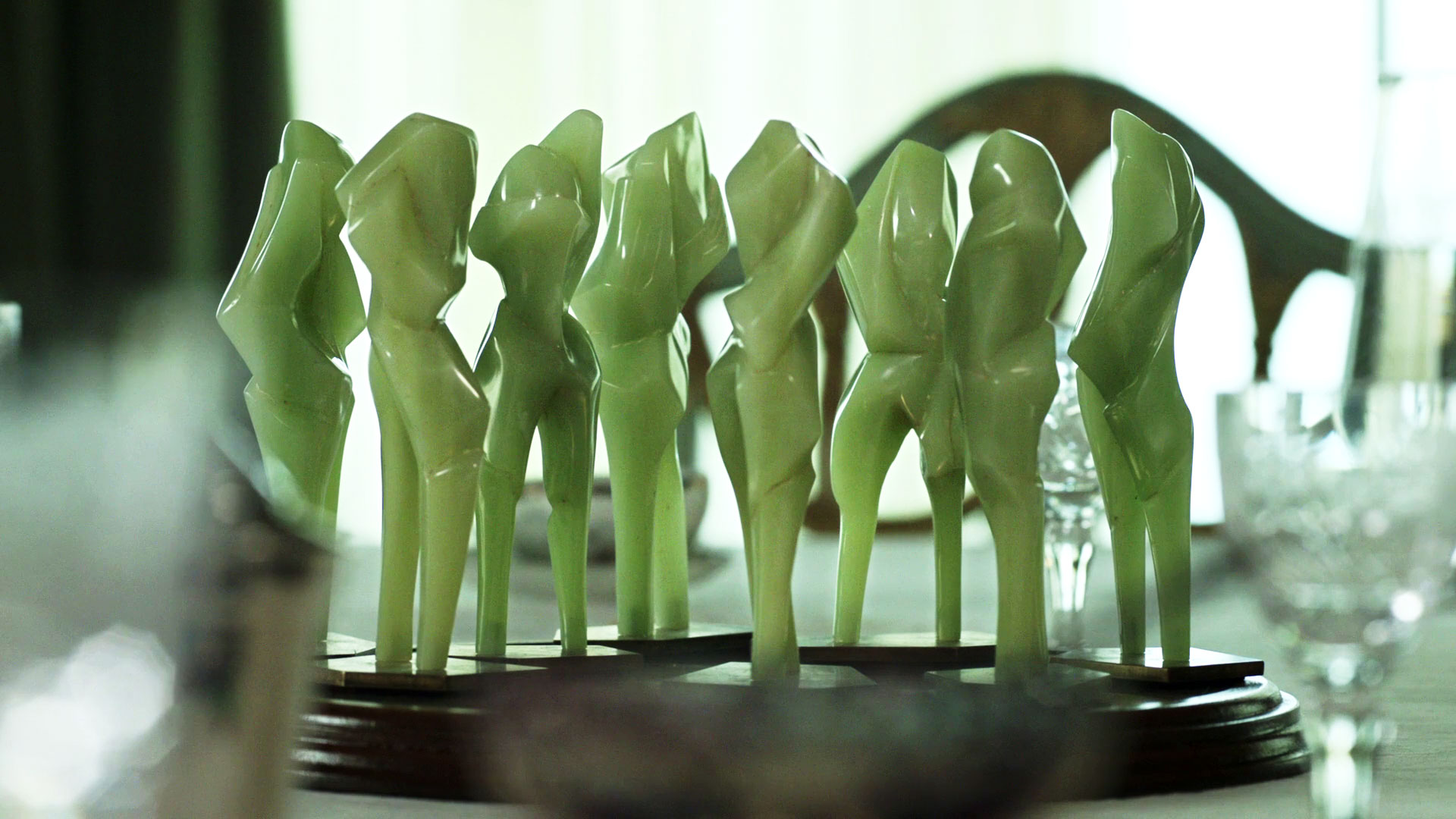
Engrossed in the unfolding events, Vera Claythorne returns to the dining room, her mind racing with suspicions. As she casts her gaze upon the table, a chilling realization strikes her: two of the jade figurines have vanished, leaving only eight remaining. Vera cannot shake the feeling that these two incidents are inextricably linked to the figurines’ disappearance, she shares her observation with the others. However, her hypothesis is met with skepticism and disbelief. Edward Armstrong, a doctor by profession, dismisses her concerns, attributing the missing figurines to mere coincidence or overactive imagination. Vera’s suspicions deepen, particularly towards Edward, whose medical knowledge could easily explain the poisonings. Yet, without concrete evidence, her suspicions remain just that – suspicions.
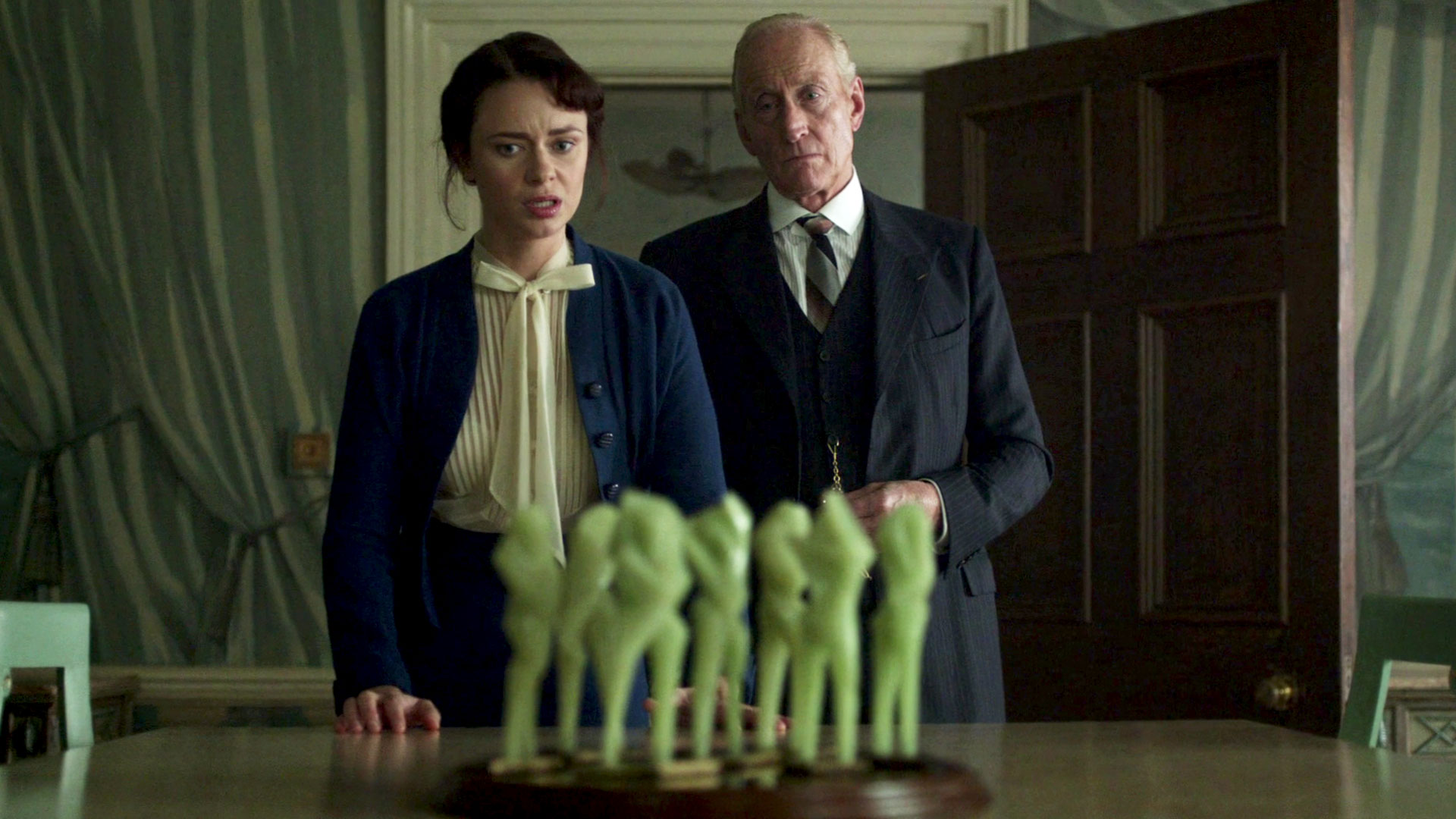
The morning dawns, casting a glimmer of hope upon the guests trapped on the island. They prepare for their scheduled departure, eager to escape the oppressive atmosphere of Soldier’s Island. However, John Macarthur tells Vera Claythorne that Mr. Fred Narracott (Christopher Hatherall), will not be coming, and that none of them will leave the island alive. Later that afternoon, tragedy strikes once again. John Macarthur is found dead, a victim of yet another murder. Another jade figurine has been removed from the dining table, its absence serving as a grim reminder of the unseen killer’s relentless pursuit. As the guests grapple with the escalating body count, their dark secrets begin to unravel, exposing the hidden depths of their troubled souls.
EIGHT little Soldier Boys travelling in Devon;
One said he’d stay there and then there were seven.
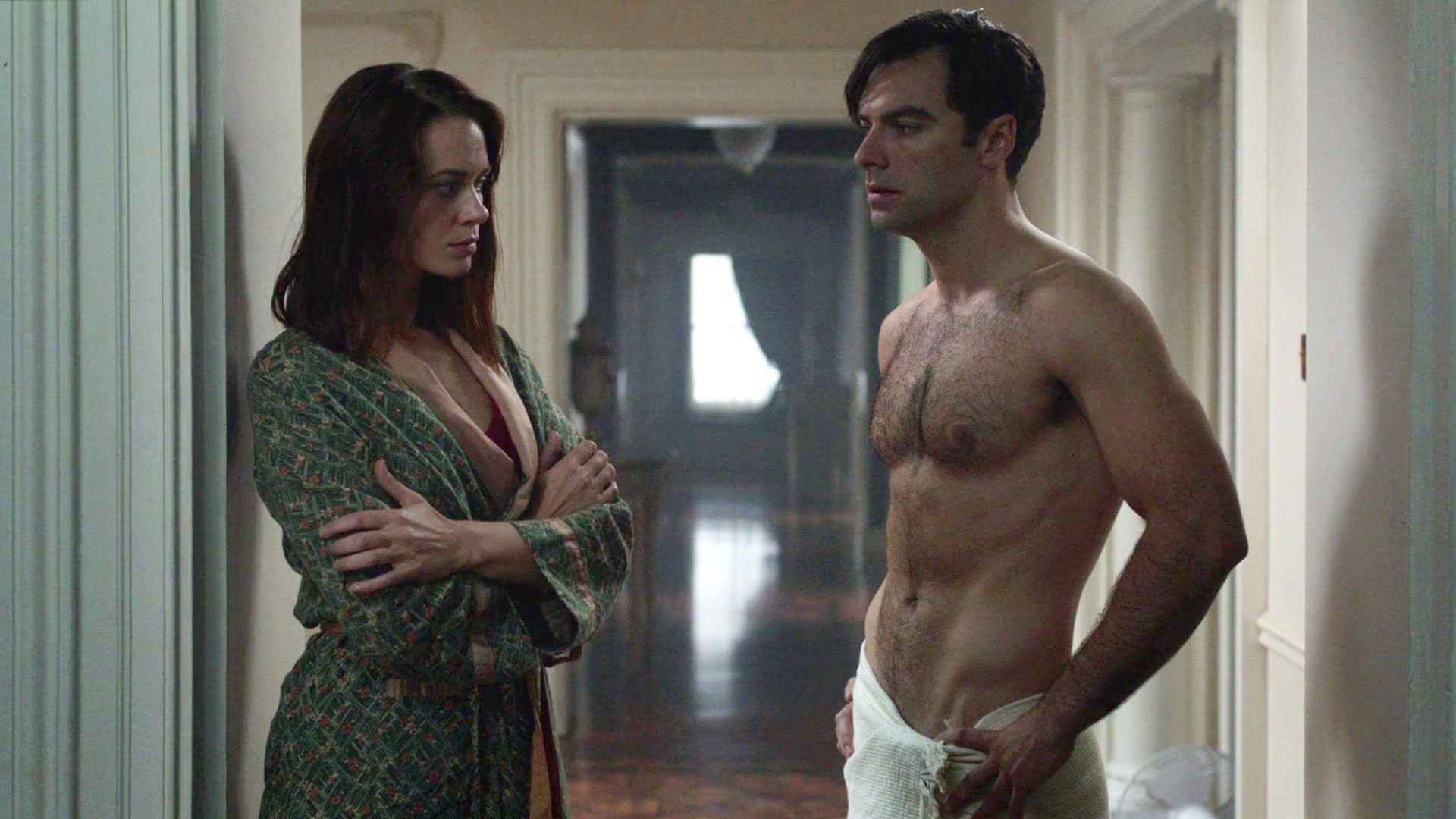
The captivating mystery AND THEN THERE WERE NONE engrosses viewers with its exceptional cast and the intricate unraveling of its plot. In the novel, each character bears direct or indirect responsibility for the deaths of others, yet their crimes escape the grasp of the law. Their transgressions range from a general sacrificing his soldiers in the line of duty to a police officer fabricating evidence to send an innocent man to a work camp, and even a mercenary stealing food and water from an African tribe, leaving them to perish. The enigmatic killer emerges as a vigilante, seeking to dispense justice where the legal system has failed.
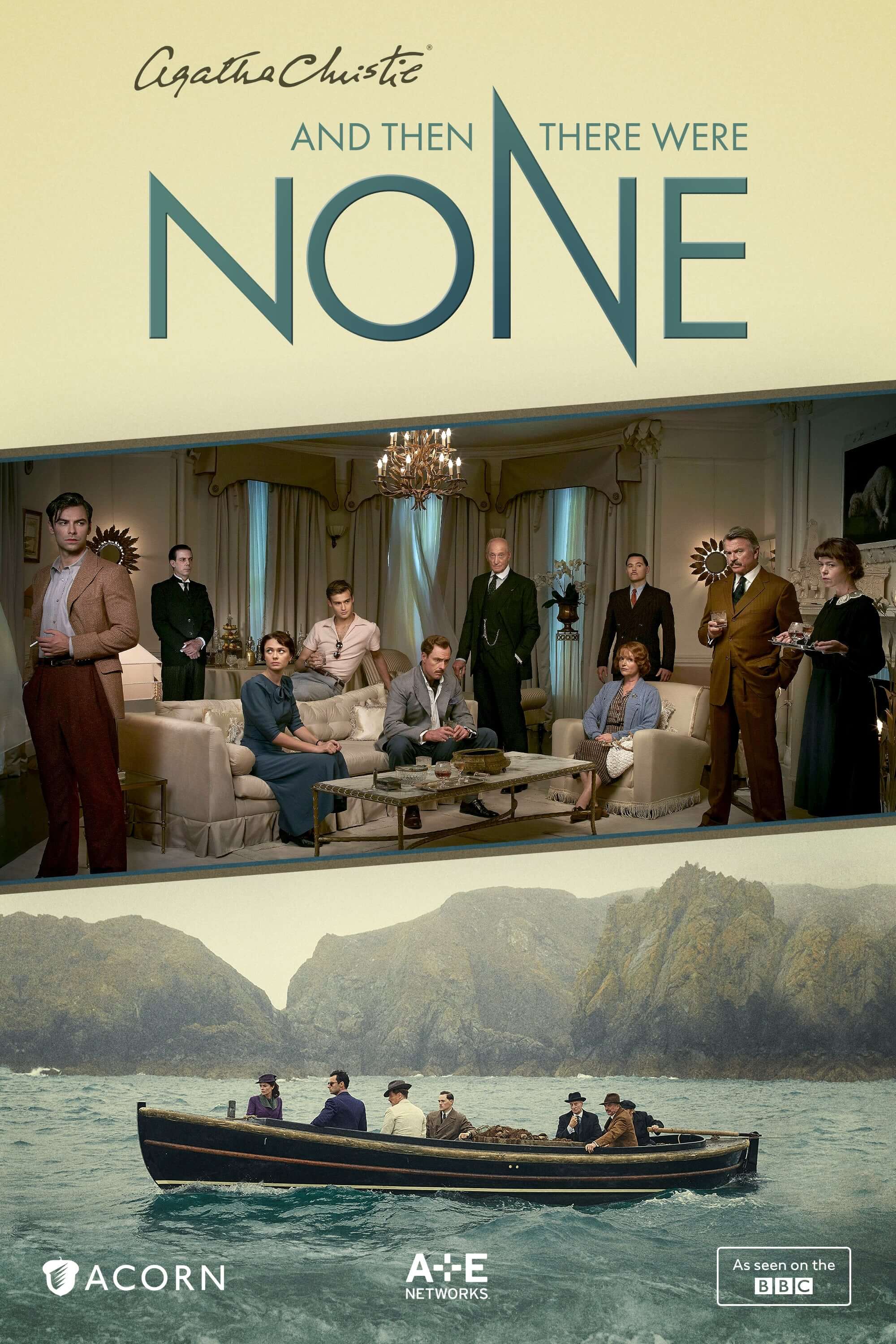
The miniseries amplifies the suspense of the original novel with its heightened violence and graphic depictions of the characters’ demise. Even for those familiar with the narrative, this adaptation keeps them on the edge of their seats for nearly three hours. The series enriches the narrative with backstories even more brutal than those in the novel, complemented by masterful storytelling, cinematography, and the meticulous design of the manor, intricate décor, and period costumes, further immerse viewers in the chilling atmosphere.
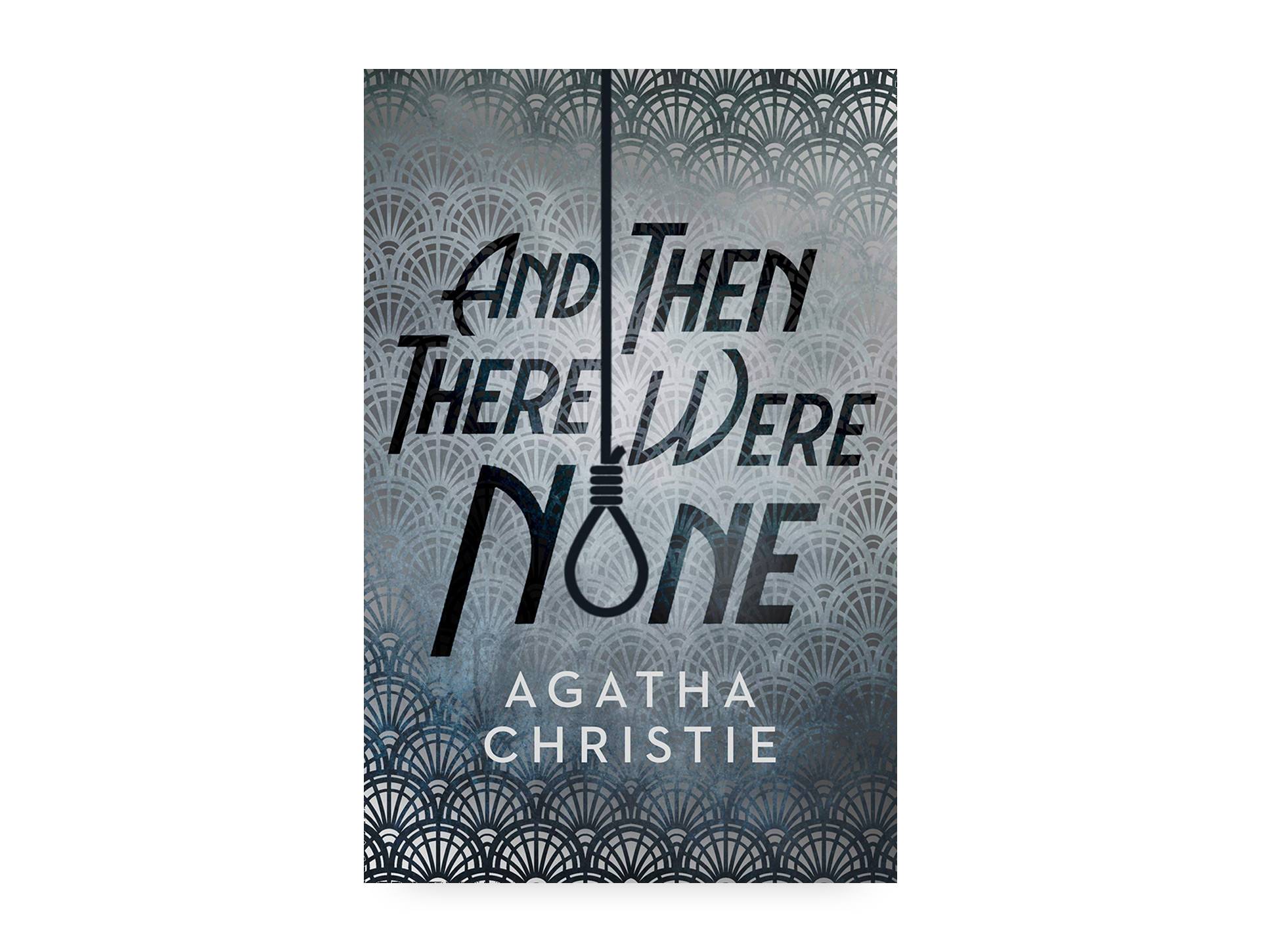
A captivating tale of suspense, AND THEN THERE WERE NONE miniseries draws inspiration from Agatha Christie’s novel, Ten Little Niggers, initially published in the United Kingdom by the Collins Crime Club on 6 November 1939. Christie described that this piece was her most challenging to write, revealing the allure of orchestrating the demise of ten individuals without resorting to absurdity or revealing the murderer prematurely. The novel’s title, derived from an 1869 minstrel song, serves as a pivotal element of the intricate plot.
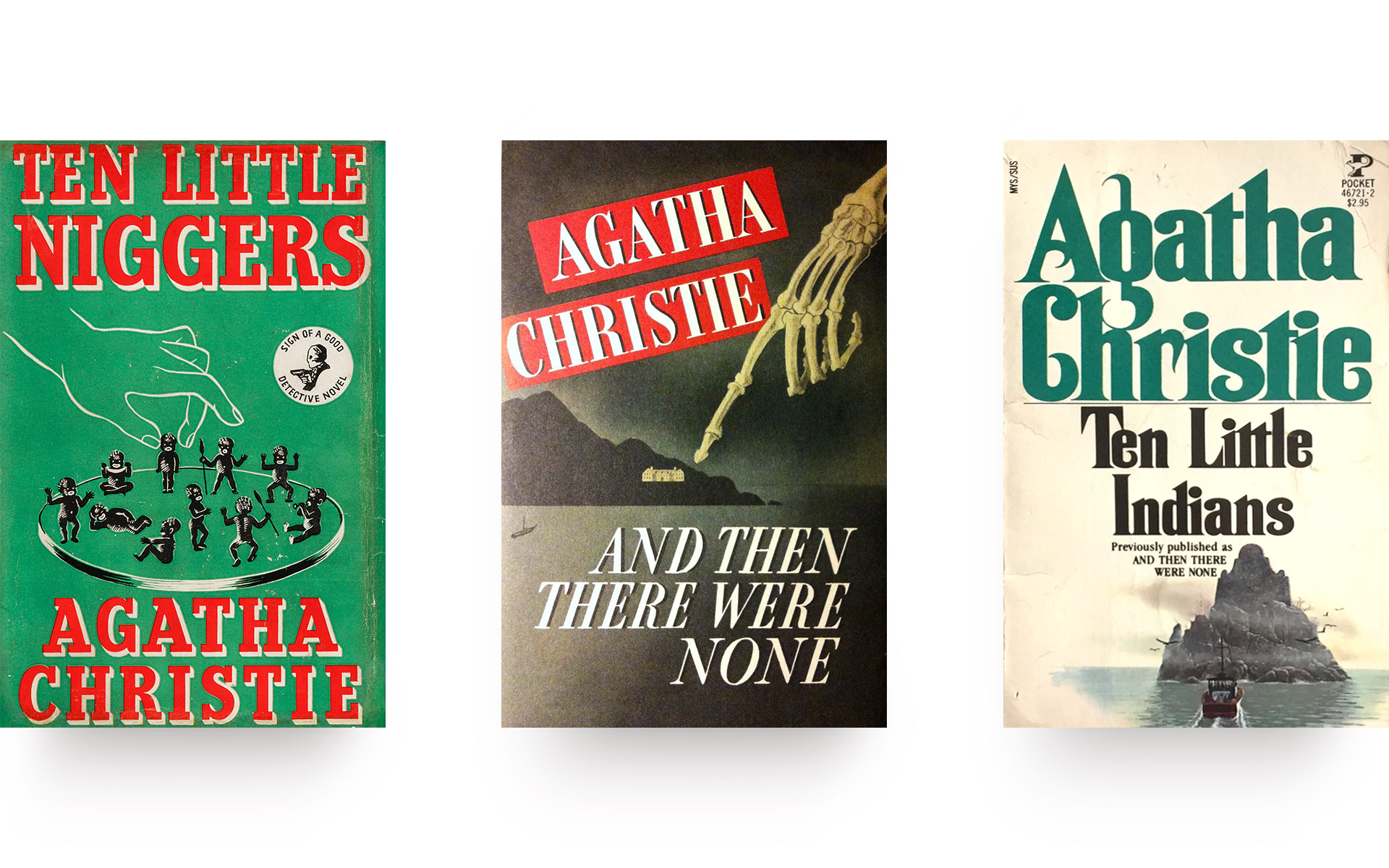
Embracing the titular phrase from the song’s final lines, the US edition was published in January 1940, replacing the original title with AND THEN THERE WERE NONE. Subsequent American reprints and adaptations have adhered to this title, with the exception of American Pocket Books paperbacks, which adopted the title Ten Little Indians (American variant of the song) between 1964 and 1986. UK editions, however, retained the original title until 1985.
The novel’s original title was altered due to the evolving sensitivities surrounding the word “Nigger” in the United States. By the early 20th century, the term had become widely recognized as offensive, necessitating a title change for the book’s first US edition and serialization. The new title, “AND THEN THERE WERE NONE,” eliminated all references to the derogatory word, replacing them with more neutral terms like “Soldiers” or “Indians” (American Indians).
Agatha Christie’s AND THEN THERE WERE NONE reigns as the world’s best-selling crime novel of all time, a testament to her enduring legacy as the best-selling novelist. With over 100 million copies sold, it stands as Christie’s most successful work, simultaneously claiming the titles of the world’s best-selling mystery and one of the best-selling books of all time.
AND THEN THERE WERE NONE has garnered the most adaptations among her works, beginning with a theatrical play in 1943, penned by Christie herself with an alternate ending tailored for the stage. Subsequent adaptations have introduced various modifications, including alterations to the conclusion, the identity of the mastermind, and the setting of the murders.
The enduring popularity of “AND THEN THERE WERE NONE” has fueled numerous cinematic adaptations, spanning decades and continents. The earliest adaptation, the 1945 black-and-white film “And Then There Were None” directed by René Clair, set the stage for subsequent interpretations. In 1965, George Pollock’s “Ten Little Indians” and Raja Nawathe’s Indian film “Gumnaam” offered fresh perspectives on the story. S. Balachander’s 1970 Tamil adaptation “Nadu Iravil” brought the tale to a new audience, while Peter Collinson’s 1974 “And Then There Were None” revisited the classic setting with a contemporary twist. Stanislav Govorukhin’s 1987 Soviet adaptation “Десять негритят” and Alan Birkinshaw’s 1989 “Ten Little Indians” further expanded the novel’s global reach.
AND THEN THERE WERE NONE has captivated audiences across various mediums, including radio dramas, theatrical plays, and television series. The novel’s first television adaptation, Ten Little Niggers, aired in 1949 by the BBC, followed by another in 1959 by ITV. In 2015, BBC One commemorated Agatha Christie’s 125th anniversary with the miniseries “And Then There Were None.” TV Asahi also produced the Japanese television series “そして誰もいなくなった” in 2017, based on the novel.
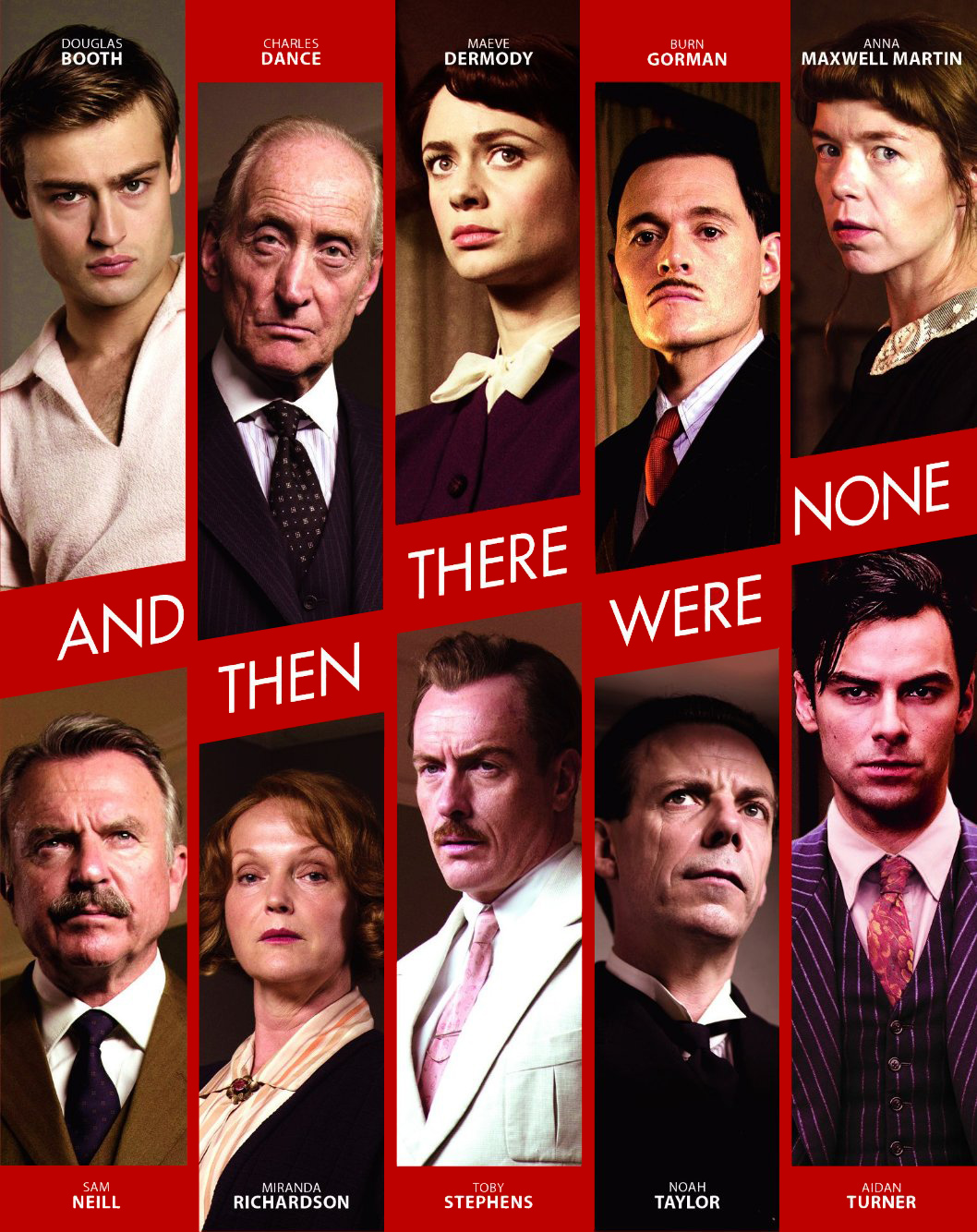
The story of “AND THEN THERE WERE NONE” stands out for its stark contrast to Agatha Christie’s other works, particularly those featuring the iconic detectives Jane Marple or Hercule Poirot. Unlike the comforting familiarity of these characters, “And Then There Were None” plunges its readers into a realm of unrelenting darkness and despair. The story’s violent and unsettling narrative strips away any sense of security or hope, leaving the audience to confront the raw realities of human nature. In the absence of a heroic figure or a renowned detective to intervene or alter the grim fate that looms over the characters, the novel’s antagonist reigns supreme, orchestrating a chilling game of deception and murder. This unique approach to Christie’s storytelling has captivated readers for decades, cementing “AND THEN THERE WERE NONE” as a masterpiece of suspense and psychological exploration.
AND THEN THERE WERE NONE was first broadcast on BBC One from 26 to 28 December 2015.




